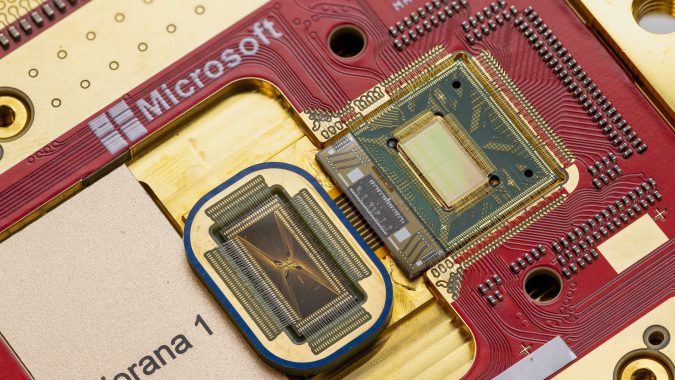Majorana 1 Quantum Chip
Microsoft has recently introduced Majorana 1, a quantum chip that promises enhanced reliability and scalability of qubits. This development marks advancement in quantum computing technology. Microsoft aims to create a fully functional quantum computer by 2027-2029. The Majorana 1 chip employs a novel type of particle known as Majorana, fabricated using topological conductors. These materials exist in a unique topological state, differing from conventional states of matter.
What are Qubits?
Qubits are the fundamental units of quantum computing. Unlike classical bits, which can be either 0 or 1, qubits can exist in multiple states simultaneously. This property allows quantum computers to process vast amounts of information more efficiently than classical computers. Majorana 1 is designed to leverage these advantages, potentially allowing for a million qubits.
The Role of Topological Conductors
Topological conductors, or topoconductors, are crucial to the functionality of Majorana 1. Unlike traditional semiconductors made of silicon, topoconductors are composed of indium arsenide and aluminium. When cooled near absolute zero and subjected to magnetic fields, these materials exhibit unique properties that are essential for stable qubit formation.
Majorana Particles
Majorana particles are exotic entities that Microsoft sought to create for their quantum computing architecture. These particles are believed to be more stable than conventional qubits, reducing the need for extensive error correction. The successful creation of Majorana particles represents leap in quantum technology.
Comparison with Other Quantum Technologies
Majorana 1 features eight qubits, which may seem modest compared to competitors like Google’s 106-qubit Willow and IBM’s 156-qubit R2 Heron. However, Microsoft claims that Majorana 1’s Topological Core architecture allows for future scalability to a million qubits. This potential is crucial for solving complex problems, such as environmental challenges and material innovations.
Quantum Computers vs Classical and Supercomputers
Quantum computers differ fundamentally from classical and supercomputers. Classical computers use bits, while supercomputers rely on advanced architectures to perform calculations quickly. Quantum computers, however, utilise quantum gates to manipulate qubits, allowing them to solve problems that are infeasible for classical systems.
Applications of Quantum Computing
Quantum computers hold promise for groundbreaking scientific advancements. They can model complex behaviours in materials, leading to innovations like self-healing materials and efficient solutions for environmental issues. Microsoft envisions integrating quantum computing with artificial intelligence to enhance research and development processes.
Challenges in Quantum Computing
Despite the advancements, error correction remains challenge in quantum computing. Errors arise when quantum systems interact with their environment, jeopardising their delicate states. Microsoft is developing new measurement techniques to improve the accuracy of quantum information storage, which is vital for the technology’s future.
Month: Current Affairs - February, 2025
Category: Science & Technology Current Affairs








